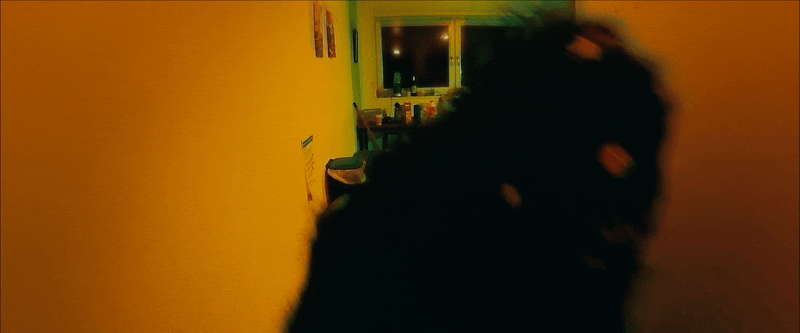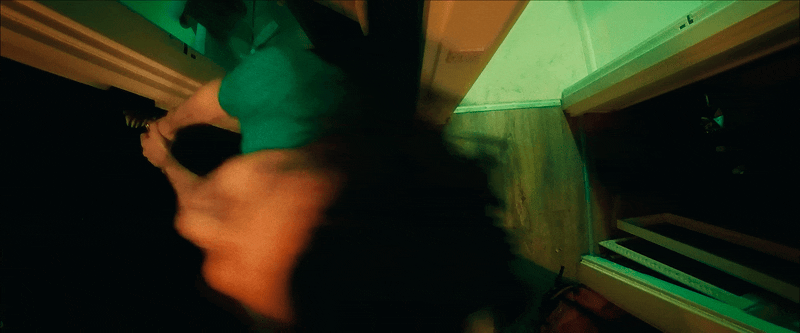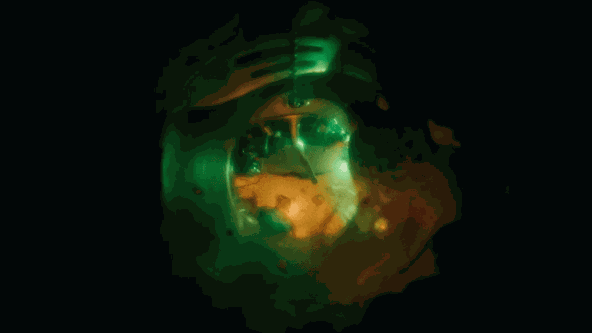How Will Wightman and a budget camera shot up a sh*thole
The Blinkink director's latest slice of insanity, This Place is a Sh*thole, creates a manic monster out of an everyday horror: messy housemates. Jamie Madge caught up with Wightman to get down and dirty with the production process, jungle soundtrack, and innovative use of consumer 360 cameras.
Classic monsters like Freddy, Jason and Count Dracula might give us the heebie-jeebies in general fiction, but true horror can be found at home if you're living with scuzzy housemates.
Taking the grubbiness of co-sharing to an insane level, Blinkink director Will Wightman's latest short, This Place is a Sh*thole, sees a kitchen-sink argument evolve into a genuinely horrifying monster attack.
Shot on an Insta360 One RS - a modular action camera offering 360° and 4K capture - the film's madcap premise and frnatic pacing makes it a cracking comedy-horror to kick off spooky season.
We caught up with Wightman to find out how he unclogged the creativity.
Credits
View on-
- Production Company BLINKINK
- Director Will Wightman
-
-
Unlock full credits and more with a shots membership
Credits
View on- Production Company BLINKINK
- Director Will Wightman
- Executive Producer Bart Yates
- Executive Producer Josef Byrne
- Writer Will Wightman
- Editor Will Wightman
- Post Supervisor Charlie Herbert
- Color Harbor Picture Company/UK
- Color Producer Sarah Banks
- Colorist Alex Gregory
- Music Will Wightman
- Executive Producer Alexander Stojanovic
- Producer Ella Kean
- Production Designer Sophie Mockridge
- DP Will Marchant
- Sound Designer Michael Griggs
- Music Jono Hook
- Music Charlie Pelling
Explore full credits, grab hi-res stills and more on shots Vault

Credits
powered by- Production Company BLINKINK
- Director Will Wightman
- Executive Producer Bart Yates
- Executive Producer Josef Byrne
- Writer Will Wightman
- Editor Will Wightman
- Post Supervisor Charlie Herbert
- Color Harbor Picture Company/UK
- Color Producer Sarah Banks
- Colorist Alex Gregory
- Music Will Wightman
- Executive Producer Alexander Stojanovic
- Producer Ella Kean
- Production Designer Sophie Mockridge
- DP Will Marchant
- Sound Designer Michael Griggs
- Music Jono Hook
- Music Charlie Pelling
Where did the idea for a grease monster come from? Tell us it’s not personal experience…
Having spent my entire adult life in mind-bogglingly expensive, soul-destroyingly disgusting shared flats, This Place is a Sh*thole was part creative experiment, part therapy. I wanted to make something that captured the frustration of living somewhere that’s simply not designed for the number of people occupying it, while also tapping into the claustrophobic horror that comes from your home feeling so disgusting and out of your control.
For me, the monster represents not just the culmination of all the filth in that flat but the resentment that grows over time when your flatmate keeps leaving the fucking stupid bins by the fucking stupid door.
I hope people watch it and remember that they’re not alone.
What aspects of 360° shooting were you keen to explore? Did it change the way you approached the shoot at all?
Typically, the ways 360 cameras are used are quite limited. They’re common in videography for action shots, time-lapses, or general vlogging, and most people associate them with those ‘tiny planet’ or ‘black hole’ shots, which can be super cool but feel quite overdone these days. I used a 360 camera on a commercial shoot a few years ago and immediately got excited about the untapped possibilities.
I wrote TPISH with the 360 camera in mind, so the story really played into the camera’s strengths.
Blinkink had one lying around the studio, so me and my DoP, Will Marchant, started experimenting with it in our spare time to test the camera’s limits. Fairly quickly, it became clear there were lots of things the camera couldn’t do, but once in a while, we’d get something that looked totally unique and really interesting, which spurred us on to try more things. Slowly but surely, we refined this aesthetic. Then, I wrote TPISH with the 360 camera in mind, so the story really played into the camera’s strengths.
The look we honed in on was a combination of practical camera moves and post-production keyframing, creating these really dynamic but incredibly precise action sequences. Me and Will made a full pre-vis of the film, shooting with the 360 camera and editing as we went to get every shot just right. We’re both acting in the pre-vis though, so that will never see the light of day.

Likewise, what effect did it have on your actors? You get pretty up-close and personal during the action.
We absolutely did. The lenses that the 360 camera uses are essentially super wide-angle, so for close-ups the camera has to be about three inches away from the actor’s face.
For some shots, the actors themselves had to hold the camera, and we all had to hide in different rooms so we weren’t caught on the edges of the frame.
How was the shoot overall? Any unexpected challenges?
Truthfully, I think this shoot was maybe the most fun I’ve ever had on set. I had such a clear plan for what each shot would be by the time we came to filming that everything went super smoothly. What’s more, the camera is so compact that we could shoot incredibly quickly. It also helped having a small but insanely talented cast and crew made up of some of my all-time favourite people.
At the end of the day, the camera and its software are consumer products, so they sometimes struggled with the quantity of footage and the speed at which we wanted to work.
That being said, we struggled with the technical capabilities of the camera. At the end of the day, the camera and its software are consumer products, so they sometimes struggled with the quantity of footage and the speed at which we wanted to work. We also had a very angry neighbour in the flat below, so we had to film the whole thing in our socks and stick towels in the doors so they didn’t slam.
Thankfully, I’ve moved out now and she hasn’t figured out where I live… yet.

The monster is enjoyably deranged – a mixture of hokey and genuinely quite scary. How was that look developed, and what direction did you give the performer?
Creatively, I wanted a creature that embodied the horrible stuff we find in our plugholes, with a design that left enough to the imagination so its origin felt ambiguous. Practically, though, this was a passion project made on a shoestring budget, so we needed a creature design that was effective but simple. That way, we could channel what little resources we had into the right places.
I did the designs in Photoshop, then Lani Hernandez, our ridiculously talented costume designer, bought a gorilla costume and sculpted a new face and hands for it. Then, we covered all of the fur with disgusting things you might find in your sink. I still have the costume – and let me tell you, it stinks.
Both the humour and horror of the creature came from its manic, unrelenting energy
As for performance, I wanted this creature to be utterly relentless, like a wild animal. “A rapid chimp” was the description we kept coming back to on set. For me, both the humour and horror of the creature came from its manic, unrelenting energy – the kind of creature that would bang its head against a wall for three days straight if that’s what it took to get through.
As with much of your work, the combination of music and editing is intrinsic to the overall energy. Did you have that in mind from the early stages, or did some of it come together in the edit?
Like all of my projects, we had a rough jungle track in the pre-vis, so a lot of the story beats and the edit were built with music in mind. Then I worked with a composer at the end of the project to write an original jungle track riffing off our original piece and the rhythm of the final visuals and edit. I find starting and ending with music is the best way to really bake it into the fibres of the visuals.

Did the use of a 360° camera give you more options in the edit suite? How did that affect the storytelling?
The nature of a 360 camera is, kind of obviously, that it’s always shooting in every direction. Quite often, we were capturing two shots at once, and sometimes even getting coverage I didn’t know we had until I was editing.
The nature of a 360 camera is that it’s always shooting in every direction.
It’s an amazing tool for fast shooting, but despite the occasional happy accident, the camera has such a specific look that you really need to have your coverage planned out in advance… and also make sure no crew are accidentally standing in the background.
There was quite a lot of comp work needed to fix those sins.
Was this designed as a Halloween release, or was that a happy coincidence?
It was designed as a Halloween release!
However… we’d planned to release it last Halloween.
What can I say? We’re all busy, and I’m a perfectionist.
What’s up next for you?
The move to features is the dream right now, so I’m writing lots – particularly comedy horror stuff like this.
Honestly, I loved making this so much, I just hope everyone enjoys watching it so I can make more.

)






